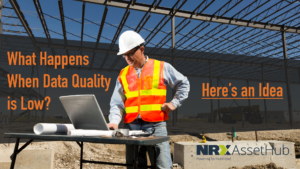Asset management can be a tough assignment for an organization with thousands or even millions of assets. You may find inefficiencies when fulfilling work orders when you realize that your assets can’t be tracked or extended outages when the maintenance and repair teams cannot trust their data. All the while, in real-time, your company’s revenue is decreasing. Incomplete asset register data can lead to unwelcomed consequences when you realize your data is unreliable.

Are you sure your asset register is complete?
To increase your organization’s reliability and trust in its data, you should check that your asset register is complete. However, it may be challenging to determine if your asset register is complete solely by looking at your EAM – the data may be unorganized, with inconsistent groupings and incoherent naming conventions. Even when you think all the assets listed in your EAM are correct, thousands of maintainable items could be missing from your database. Therefore, knowing the right way to check your asset register is key to an accurate EAM. Outlined below are some steps to check that your asset register is complete.
1. Review Your Drawings
We recommend this option first as it’s easy and efficient if your drawings are up to date. By marking and comparing your drawings to your asset register, you can identify any inconsistencies from your EAM/CMMS and make updates accordingly.
2. Review Engineering Handover Materials
This is option 2. If your drawings are outdated, go over your engineering handover materials instead. When choosing this option, identify any items missing from your EAM/CMMS. The handover materials usually include essential information for your asset registers, such as the serial number and supplier documentation.
3. Plant Walkdown
A plant walkdown can be expensive but leads to the most accurate results. Complete the plant walkdown with a drawing review to update your asset register and drawings simultaneously.
4. Have People Familiar with the Facilities Review the Areas They Are Familiar with in the EAM
Lastly, you can have your employees review the asset register for the parts they are familiar with. They are experts in their field and can quickly identify missing assets. This way, they can streamline their work later on when they have complete data to work with.
How we can help
An EAM Migration is the perfect opportunity to check that your asset register is complete when moving to your new EAM. Remember that an EAM Migration will not fix any mistakes in your asset register; you inspect your data before migrating to a new system. When we work with customers, we always help them identify any assets missing from their EAM system. If you’re seeking assistance with your asset migration, don’t hesitate to download our brochures for more information, or reach out to us if you want to book a demo or talk to a live agent.
Setting Up Your Data for a Migration Project
What Happens When Data Quality is Low? Here's a Thought.
Avoiding Asset Data Loss During an EAM Migration
Share this article




